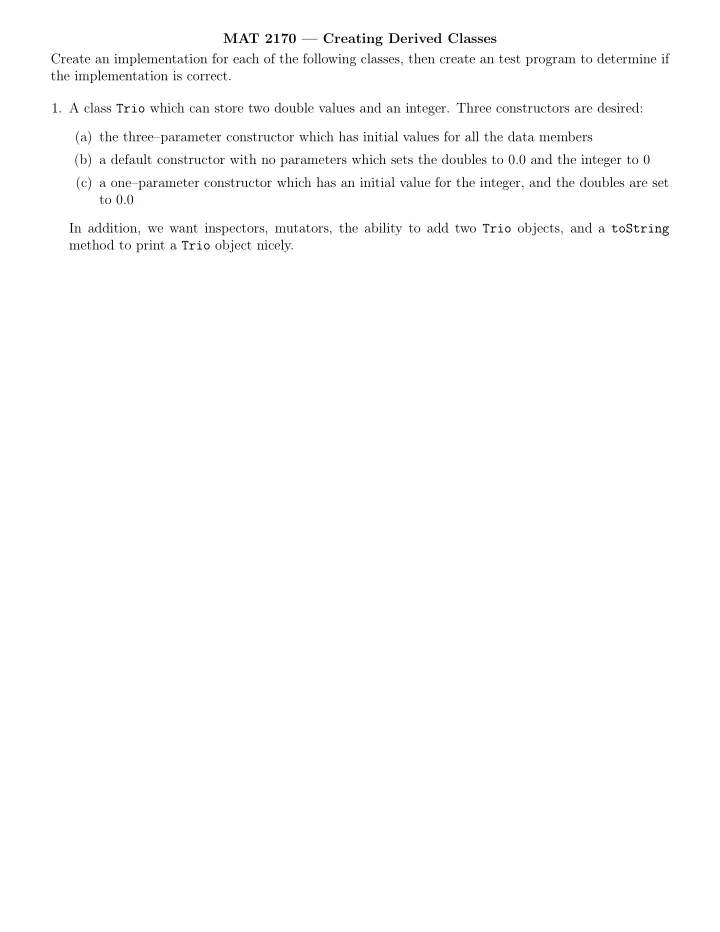

MAT 2170 — Creating Derived Classes Create an implementation for each of the following classes, then create an test program to determine if the implementation is correct. 1. A class Trio which can store two double values and an integer. Three constructors are desired: (a) the three–parameter constructor which has initial values for all the data members (b) a default constructor with no parameters which sets the doubles to 0.0 and the integer to 0 (c) a one–parameter constructor which has an initial value for the integer, and the doubles are set to 0.0 In addition, we want inspectors, mutators, the ability to add two Trio objects, and a toString method to print a Trio object nicely.
2 MAT 2170 — Creating Derived Classes 2. A test program for the Trio class: import acm.program.*; public class TestTrio extends DialogProgram { public void run() { Trio T1 = new Trio(2.5, 9.3, 0); Trio T2 = new Trio(29); Trio T3 = new Trio(); Trio T4 = new Trio(1, 2, 3); print("Trio T1 is: " + T1 + "\nTrio T2 is: " + T2); print("\nTrio T3 is: " + T3 + "\nTrio T4 is: " + T4); print("\nSum of T1 and T4 is: " + T1.add(T4)); T4.setX(14.4); T4.setY(39.99); T4.setCounter(100); print("\nAfter mutating:\nTrio T4 is: " + T4); println("\nNow the sum of T1 and T4 is: " + T1.add(T4)); } }
3 MAT 2170 — Creating Derived Classes 3. A second class, BlinkingRect , that implements a rectangle which changes colors randomly as it glides out of the window. We need new data members to indicate how many moves to make before changing colors, how many moves have been made so far, and a random generator to provide the random colors. The test program is given as: import acm.program.*; import java.awt.*; public class TestBlink extends GraphicsProgram { public void run() { BlinkingRect BR = new BlinkingRect(0.0, 0.0, 100.0, 75.0, Color.green, 10); add(BR); for (int i = 1; i <= 450; i++) { BR.move(); pause(20); } } }
Recommend
More recommend